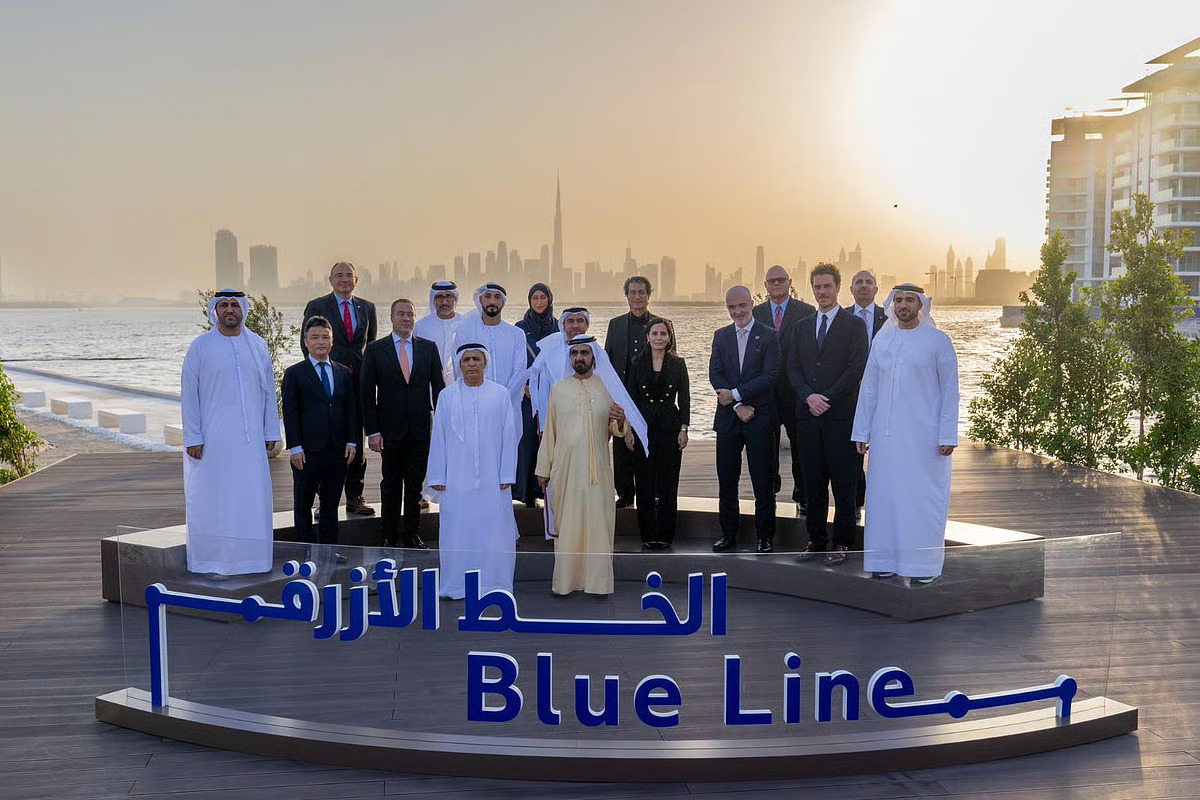
In a momentous step toward shaping Dubai’s future urban mobility, His Highness Sheikh Mohammed bin Rashid Al Maktoum, Vice President and Prime Minister of the UAE and Ruler of Dubai, officially laid the foundation stone of the Dubai Metro Blue Line, marking the beginning of one of the city’s most transformative infrastructure projects to date.
A Vision in Motion
The Dubai Metro Blue Line is set to span 30 kilometers, connecting nine key residential and commercial areas across the emirate. The route will include 14 stations, five of which will be underground, offering fast, sustainable, and driverless transit for hundreds of thousands of passengers daily. This initiative is a strategic extension of Dubai’s 2040 Urban Master Plan and reinforces the emirate’s ongoing commitment to innovation, connectivity, and sustainable growth.
Strategic Connectivity Across the City
The Blue Line will link several important communities, including Mirdif, Al Warqa, Dubai Silicon Oasis, International City, Ras Al Khor Industrial Area, and Academic City, among others. One of its key highlights is the planned 1.3 km viaduct across Dubai Creek—making it the first metro line in the city to cross this waterway, further enhancing connectivity between old and new Dubai.
Architectural Innovation: Emaar Metro Station
Among the stations, the standout is undoubtedly the Emaar Metro Station in Dubai Creek Harbour, which is set to become the tallest metro station in the world at 74 meters high. The station will feature a breathtaking, futuristic design that reflects Dubai’s architectural ambition and will include the city's first-ever naming rights partnership for a metro station—secured by Emaar Properties.
Sustainable and Passenger-Focused
Designed with the future in mind, the Blue Line has received Platinum Green Building certification—ensuring it meets the highest global sustainability standards. The project emphasizes walkability, integration with buses, taxis, and bike-sharing systems, and will serve as a model for smart, multi-modal urban transportation.
The network is expected to carry 200,000 daily riders by 2030, rising to over 320,000 passengers per day by 2040. Beyond easing traffic congestion, it will significantly reduce carbon emissions and fuel consumption across the city.
Economic and Social Impact
According to Dubai’s Roads and Transport Authority (RTA), the Blue Line is projected to contribute more than AED 56 billion to the economy by 2040. These returns come from savings in travel time, fuel efficiency, reduced emissions, and improved road safety. In parallel, the areas surrounding the metro stations are expected to experience a surge in property values, unlocking new real estate investment potential across Dubai’s emerging zones.
What’s Next?
Construction of the Blue Line is scheduled to begin in 2025, with tunneling operations launching shortly thereafter. The project will include a dedicated depot at Al Ruwayyah, housing 28 new driverless metro trains equipped with the latest smart technologies.
The line is expected to begin trial runs by 2028, with full operations planned for 2029—exactly two decades after the Dubai Metro’s first trains began service.
A New Era for Dubai Mobility
The Dubai Metro Blue Line isn't just a new addition to the city's growing transit network—it's a symbol of the emirate's commitment to shaping a smarter, greener, and more inclusive urban future. As Dubai prepares to welcome millions of new residents and visitors over the coming decades, the Blue Line will serve as a backbone of the city’s integrated, forward-thinking infrastructure.